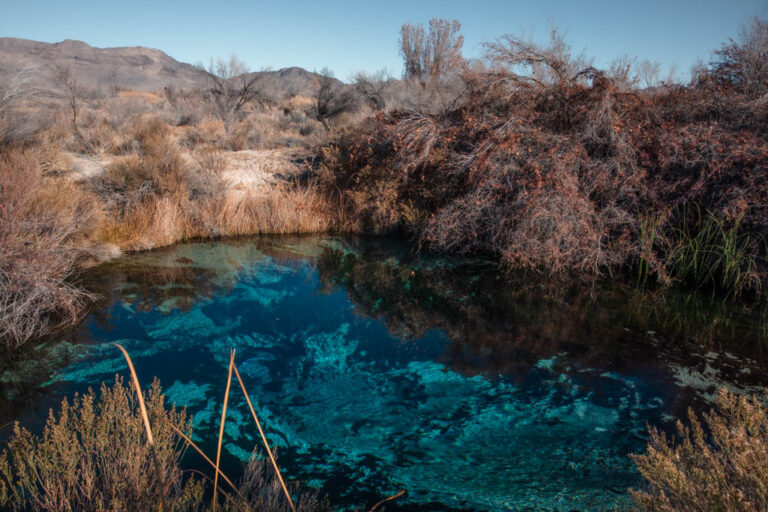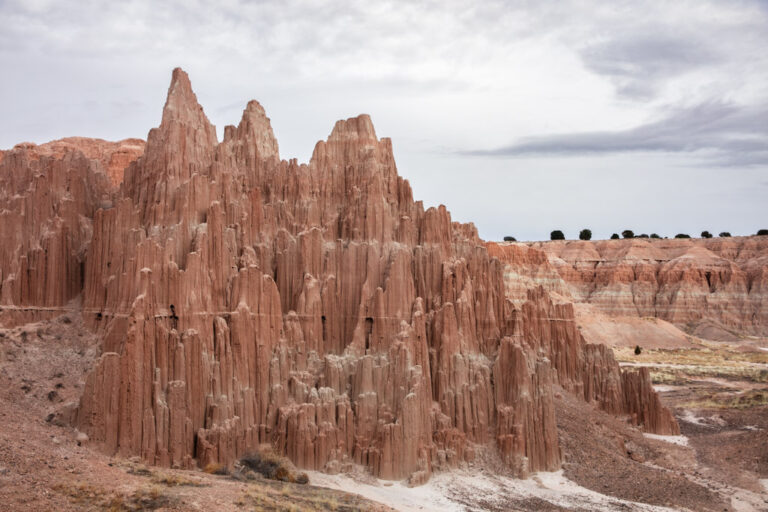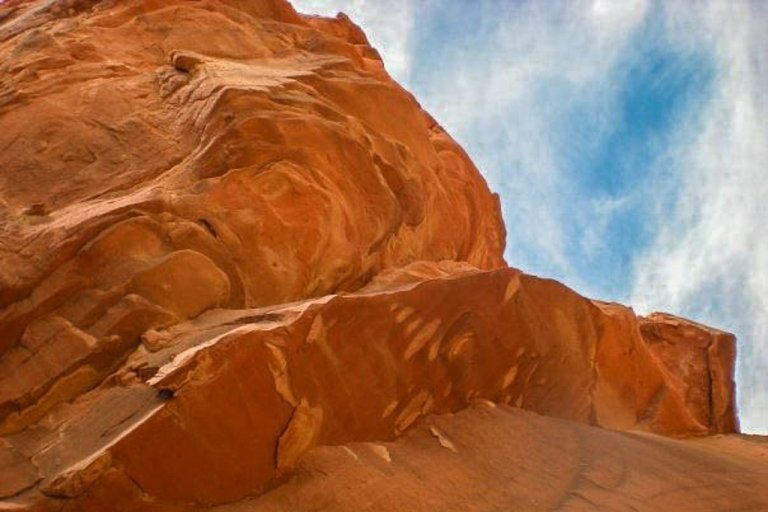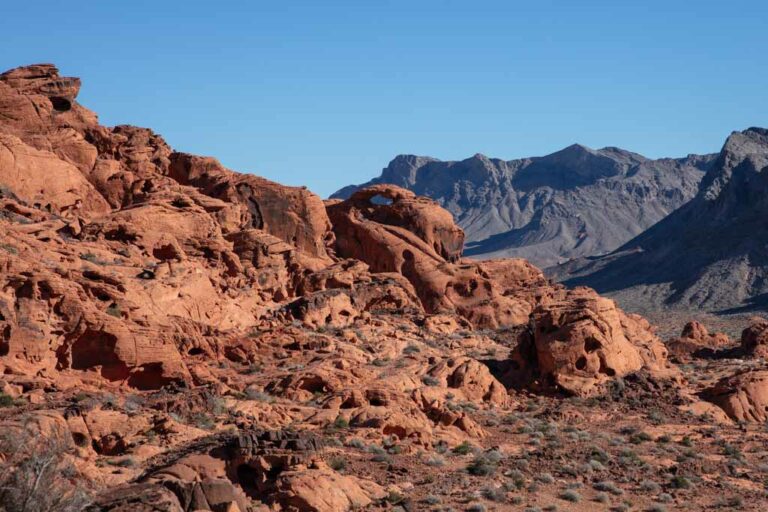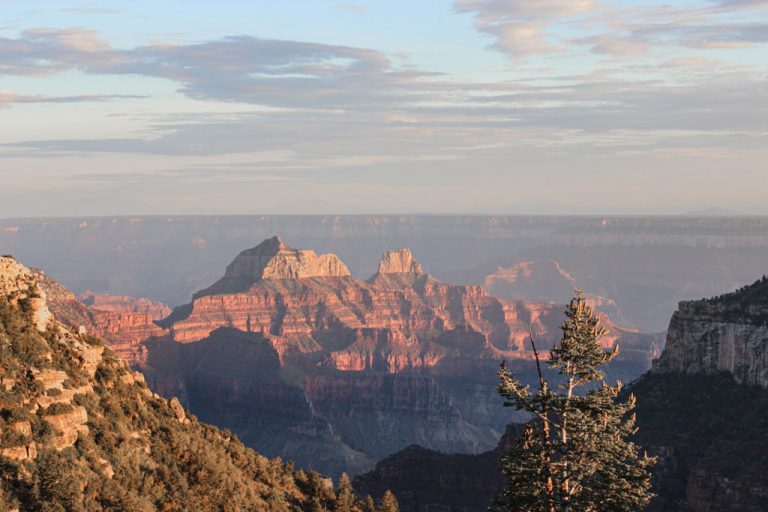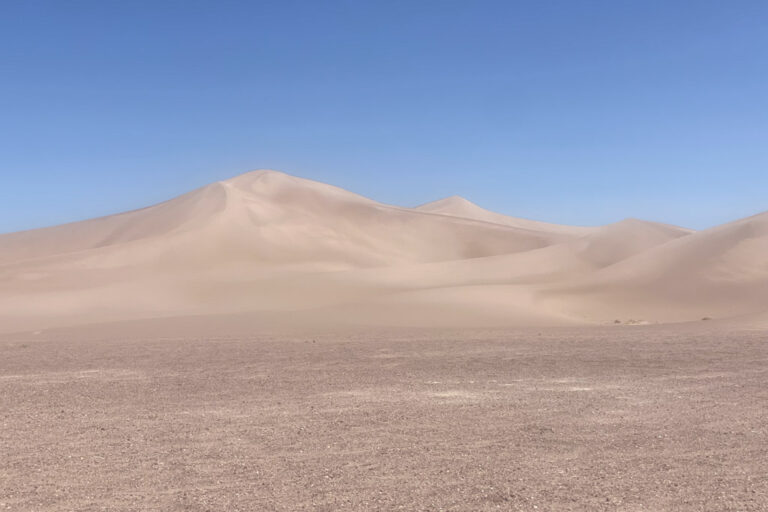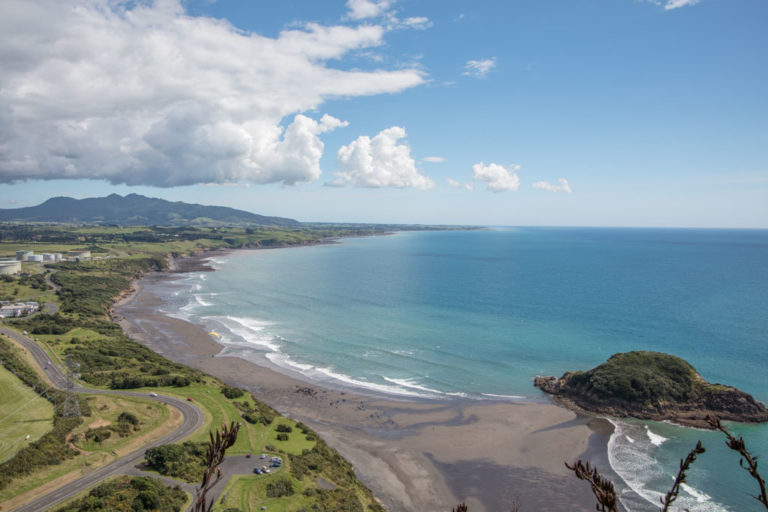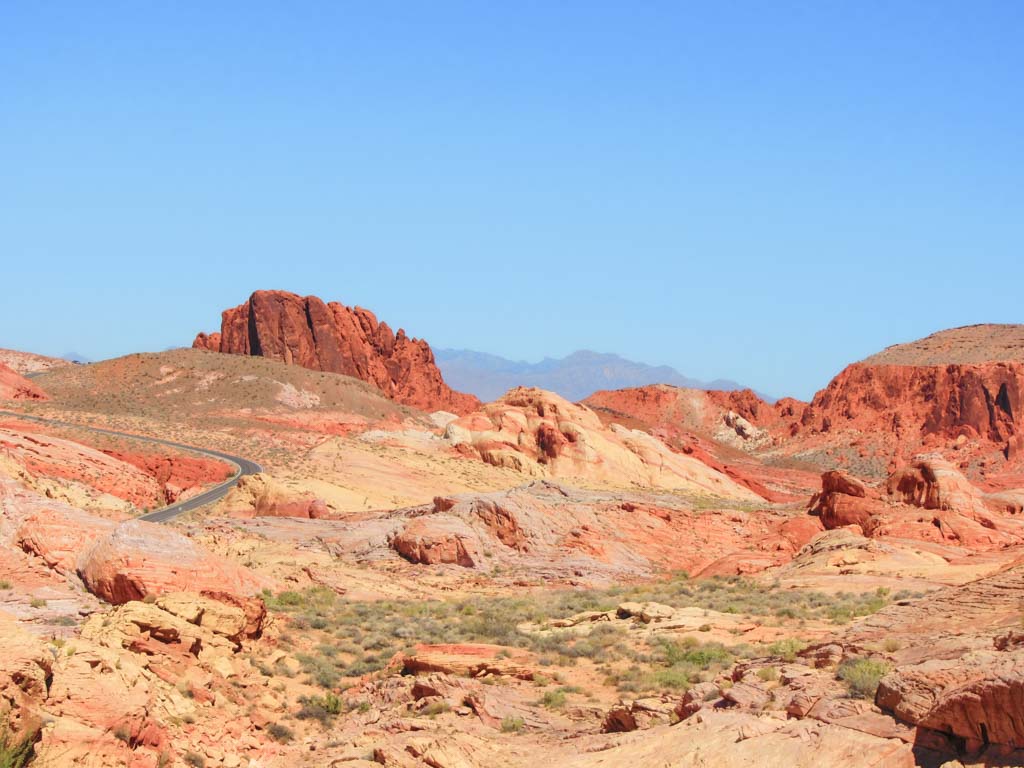
Visiting Valley of Fire State Park
(+Things to Do)
Visiting Valley of Fire State Park (+Things to Do) was originally published in February 2024
At only a one hour drive from Las Vegas, Valley of Fire State Park is one of the best things to do in Vegas, especially for those looking to get out into nature and away from the Las Vegas Strip.
Valley of Fire State Park features beautiful and colorful landscapes, panoramic vistas, great hiking, fascinating rock formations, petroglyphs, and scenic drives, making it one of my personal favorite things to do near Vegas.
I’ve visited Valley of Fire State Park several times since 2006, owing to having heaps of family who all relocated from Alaska down to Nevada over the years.
Every time I re-visit Valley of Fire I’m still just as blown away as I was the very first time my cousin and I set out for a day trip out there when we were teenagers.
So, in this guide, you will find all the information on visiting Valley of Fire State Park, including the best things to do at Valley of Fire, where to camp, and more.
- Valley of Fire Quick Tips & Info
- A Little About Valley of Fire State Park
- How Much Time to Spend at Valley of Fire
- The Best Time to Visit Valley of Fire State Park
- How to Get to the Valley of Fire
- Things to do in Valley of Fire State Park
- Valley of Fire Day Trip Itinerary from Vegas
- Camping in Valley of Fire State Park
Need Travel Insurance and Evacuation Services for Nevada?
Start shopping for travel insurance plans over at IATI Insurance. Readers of the Adventures of Nicole get a 5% discount off your plan.
The Adventures of Nicole partners with Global Rescue to offer the world’s leading medical evacuation and security advisory services. To travel with peace of mind, shop evacuation coverage at Global Rescue.
Valley of Fire Quick Tips & Info
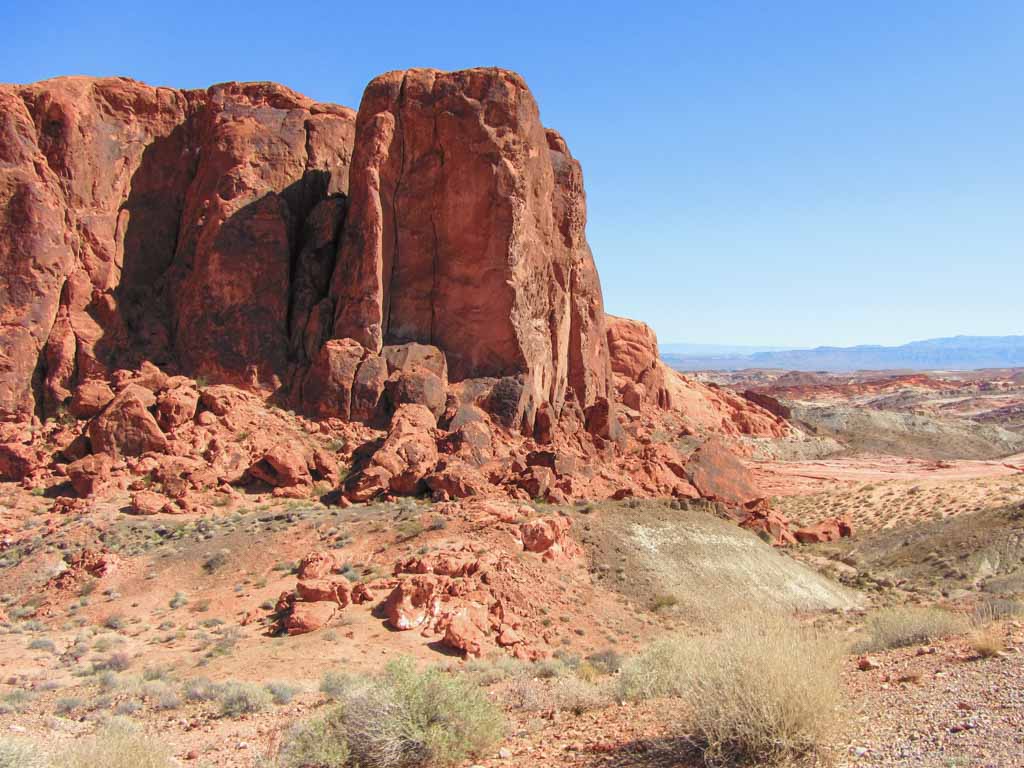
- Valley of Fire State Park has an entry fee. The fees are $10 for vehicles with Nevada license plates and $15 for vehicles with out-of-state plates.
- The park is open year-round, however, the Valley of Fire State Park Visitor Center is open from 08:30 until 16:30 daily.
- There are campgrounds at Valley of Fire, they cost $20 per night for Nevada residents and $25 per night for out-of-state visitors.
- Bring plenty of water as temperatures can swelter out here, especially in summer.
- Pack in your own food for picnics and snacks. There are no restaurants inside of Valley of Fire State Park.
- Dogs are allowed in Valley of Fire State Park but they must be on a leash.
- Drone use is not permitted within Valley of Fire State Park.
A Little About Valley of Fire State Park
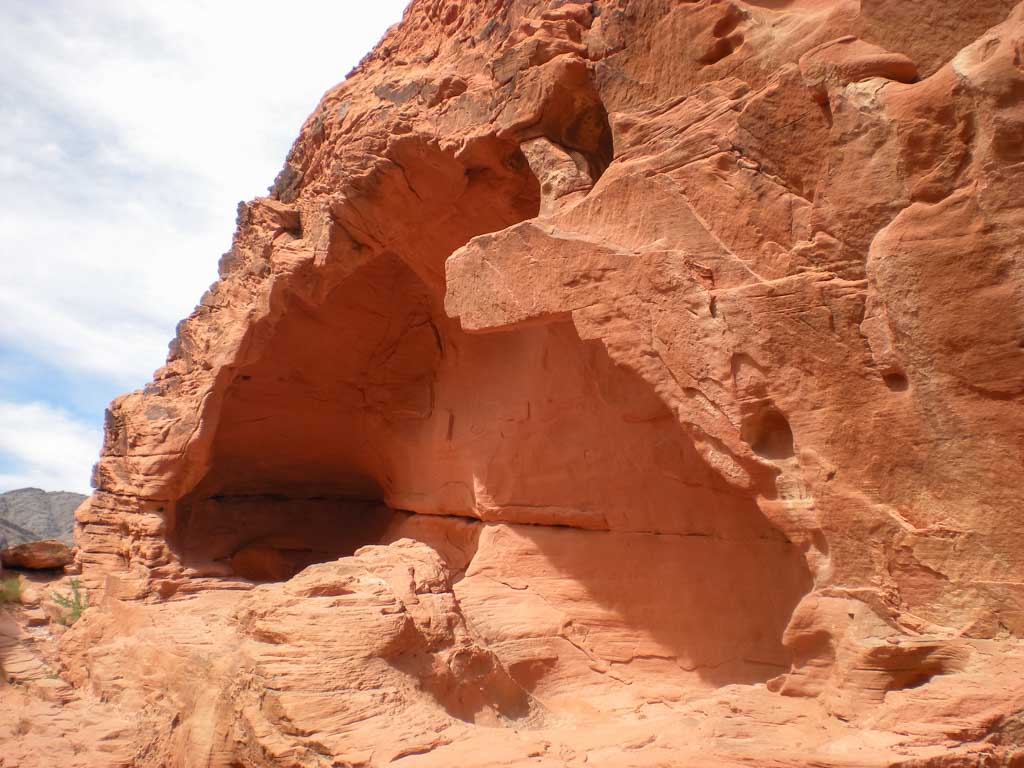
At 50 miles north of Vegas, Valley of Fire State Park is conveniently located from the city, making it a great day trip option.
The 40,000 acre park is Nevada’s largest and oldest state park, featuring distinct rock formations that, because of their color, appear to be on fire, which is where Valley of Fire State Park got its name.
There are two roads to know that cut through the Valley of Fire that will likely be the main arteries from which your explorations of the park will take place.
Valley of Fire Highway runs across the southern side of the park, running east to west. Both park entrances lie at the park’s extremities.
Some of the main highlights along the Valley of Fire Highway include the Beehives, Atlatl Rock, Seven Sisters, and Elephant Rock.
The other main road to know is Mouse’s Tank Road (also marked as White Domes Road on some maps).
Mouse’s Tank Road heads north from Valley of Fire Highway at the Valley of Fire State Park Visitor Center and leads to Petroglyph Canyon, Fire Canyon, Pink Canyon, Fire Wave, and White Domes.
How Much Time to Spend at Valley of Fire
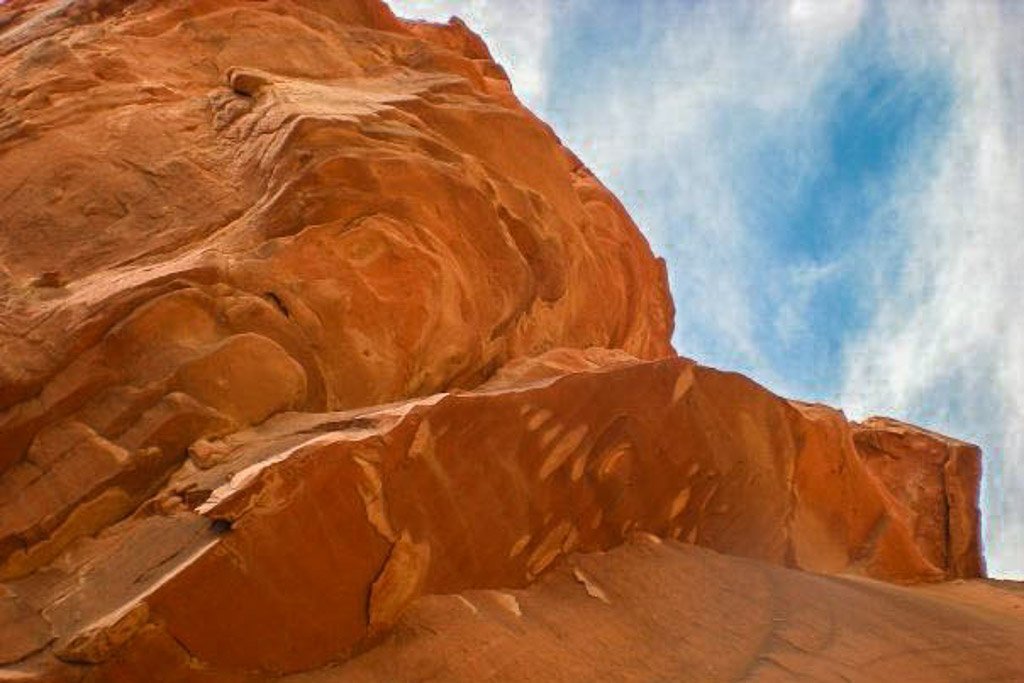
This all is dependent on your interests and how much of Valley of Fire State Park you want to see.
At one hour drive time from Vegas, you can easily make a day trip spending four or so hours visiting Valley of Fire but if you have more time to spare (and camping gear) I recommend trying to spend the night in one of the campgrounds to give yourself a bit more time to explore around the park.
The Best Time to Visit Valley of Fire State Park
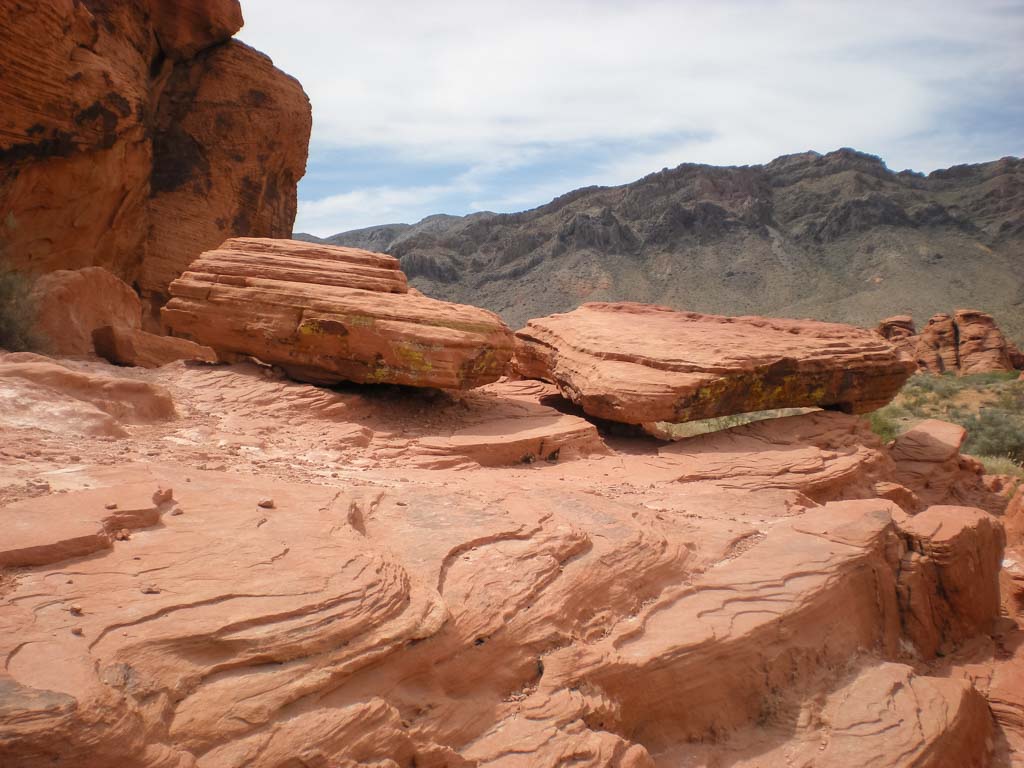
Valley of Fire State Park is open year-round, but some months are better than others for enjoying the park.
Summer is best avoided as the Valley of Fire suffers from extreme heat with temperatures exceeding 100°F during that time.
In my opinion, the best time to visit Valley of Fire State Park is the fall, winter, and spring months of October to April with more tolerable temperatures.
How to Get to the Valley of Fire
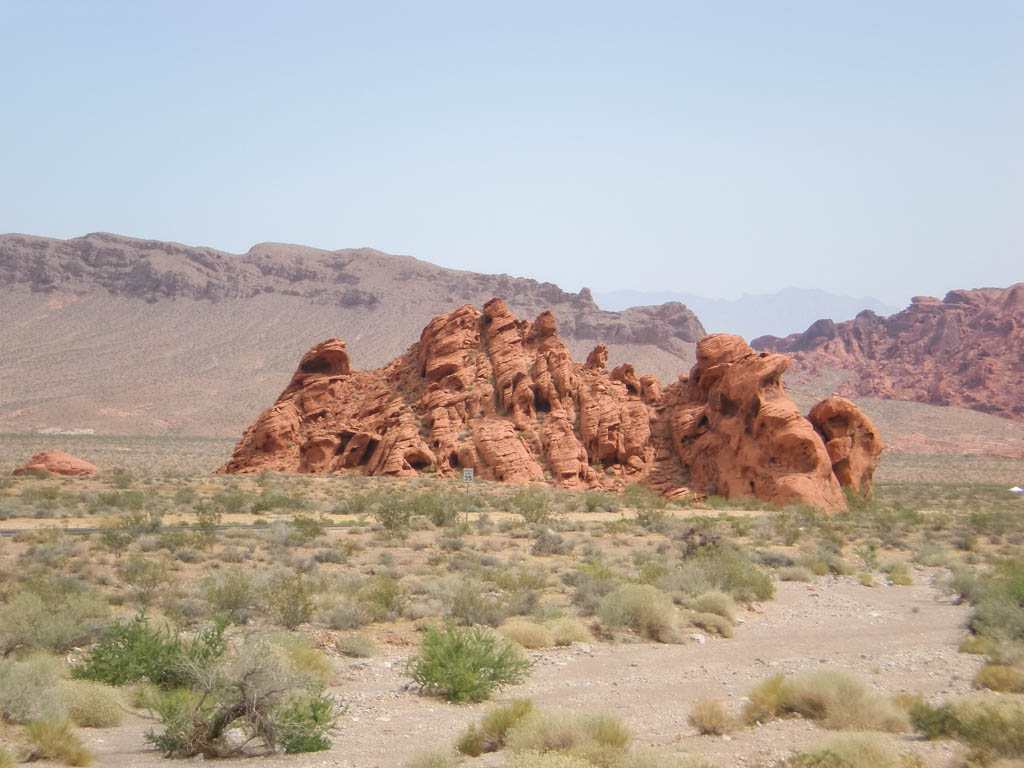
At around 50 miles from Las Vegas, the Valley of Fire is easily reached, especially for those who have rented a car.
For those that plan to start from Valley of Fire State Park’s West Entrance, you will take the I-15 north and turn east at the Valley of Fire Highway.
If coming from Lake Mead, the journey is only about 20 minutes, reaching the Valley of Fire Highway’s East Entrance via State Route 169.
Shop car rental rates in Las Vegas
The best way to visit Valley of Fire State Park is by rental car but you can also opt to book a day tour of the Valley of Fire if you’re not up for doing logistics.
Recommended Valley of Fire Tours:
This organized small group tour of the Valley of Fire
Or this guided hiking tour of Valley of Fire State Park
Things to do in Valley of Fire State Park
Along the Valley of Fire Highway
The Beehives
The Beehives will likely be your first stop if you enter from the Valley of Fire West Entrance.
These unusual rock formations are comprised of sandstone that have been eroded by wind and water for thousands of years causing horizontal lines and holes in the rock, giving the Beehives their unique appearance.
Atlatl Rock & Petroglyphs
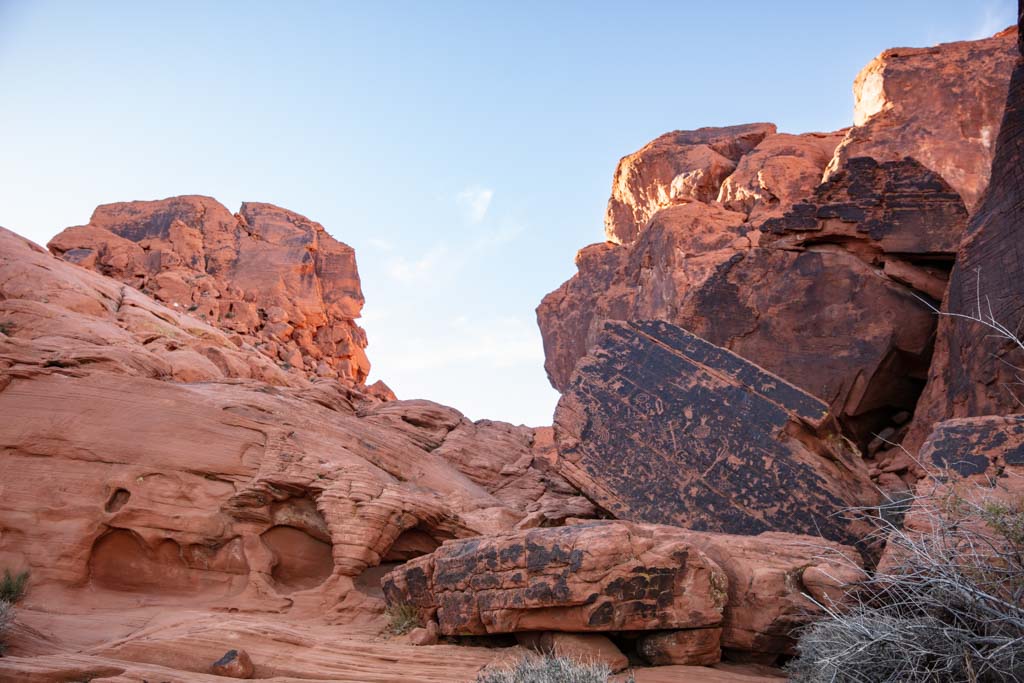
Atlatl Rock is located on the short Scenic Loop Drive that meaders a little from the main Valley of Fire Highway.
A climb the staircase at Atlatl Rock will bring you to some excellent petroglyphs that were etched into the towering rock by ancient tribes that inhabited the area around Valley of Fire State Park.
If you’re wondering where it gets its name, Atlatl comes from the Nahuatl Aztec Language which translates out to spear thrower, in reference to the atlatl, an ancient weapon that preceded the bow and arrow.
Arch Rock
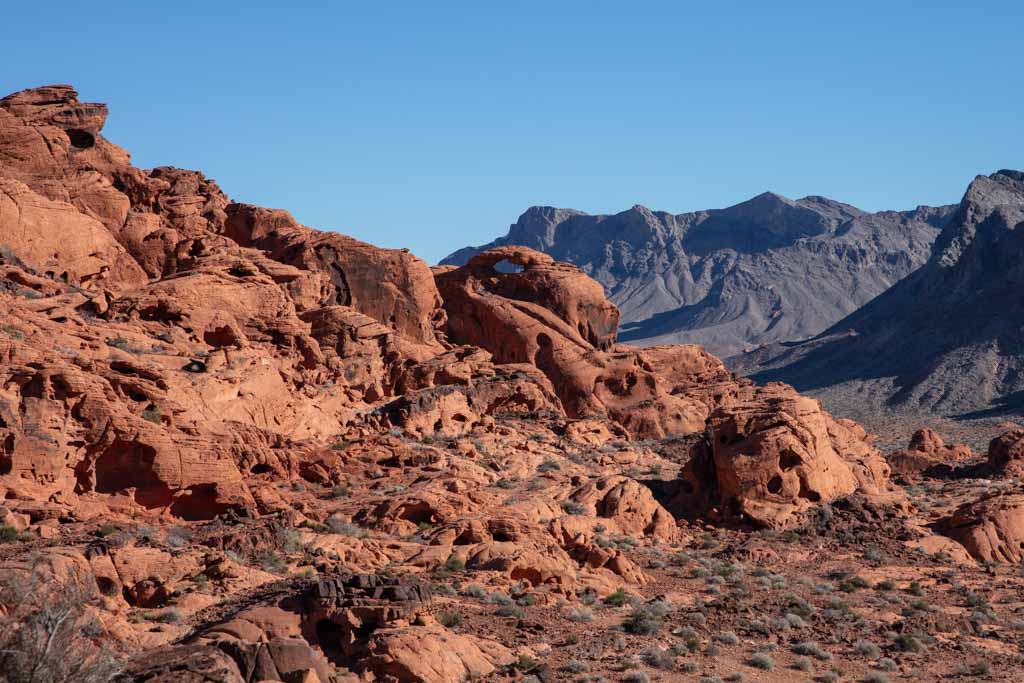
Continuing along the Scenic Loop Drive from Atlatl Rock is Arch Rock.
Arch Rock is a small sandstone arch sat atop a rock. The Arch Rock is quite fragile, so don’t climb on it.
Fire Cave/Windstone Arch
Fire Cave is still a good spot to get out and stretch your legs, just beyond Arch Rock on the Scenic Loop Drive, but note that the Windstone Arch located inside of the cave collapsed in 2021.
The Seven Sisters
Continuing back onto the Valley of Fire Highway heading east, the next major feature you will reach is the Seven Sisters.
A cluster of seven boulders all stand together, comprising the Seven Sisters. These funky geological formations are composed of red sandstone and are thought to have been part of a larger chunk of red rock that had been eroded over the centuries revealing what is now the Seven Sisters.
Petrified Logs
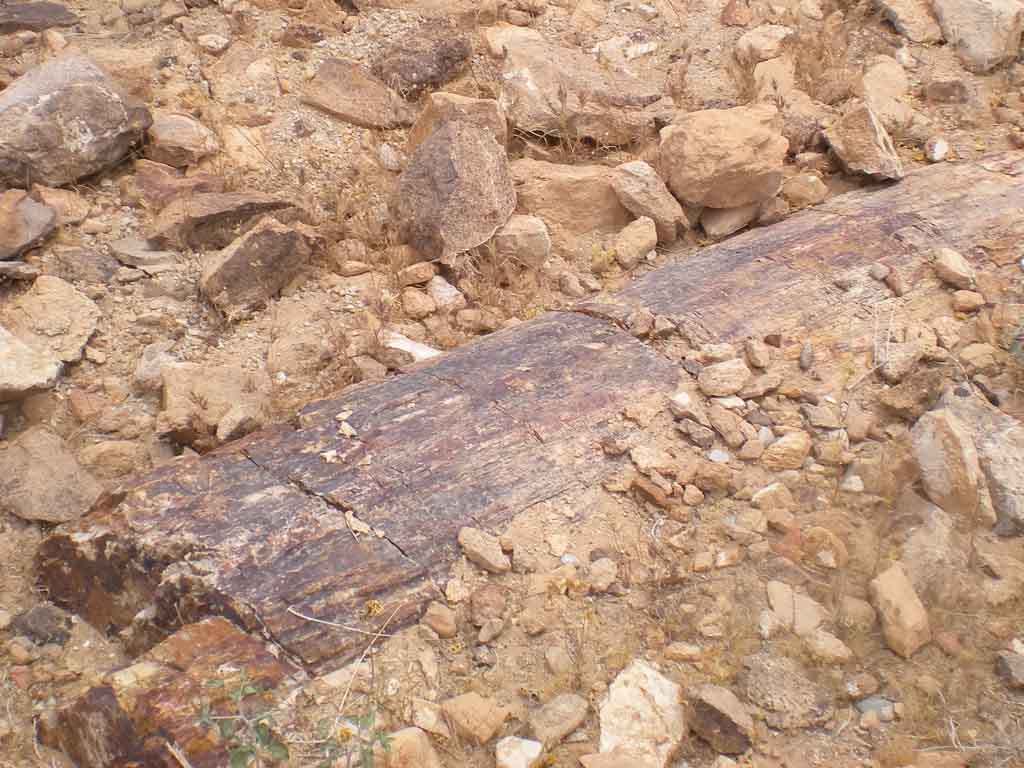
Distance: 0.3 mile loop
Time: 15 minutes
Difficulty: Easy
Continuing toward the East Park Entrance along the Valley of Fire Highway will bring you to the famed Petrified Logs.
A 0.3 mile loop hike will bring you to the site of the Petrified Logs.
These Petrified Logs aren’t actually from this area, they were carried here by water from a forest far away and later found themselves buried under mineral deposits.
These mineral deposits work their way into the tree, replacing the wood and creating a fossil of the original tree.
The Petrified Logs are within a fenced area to protect them but you can view them from the trail.
Elephant Rock
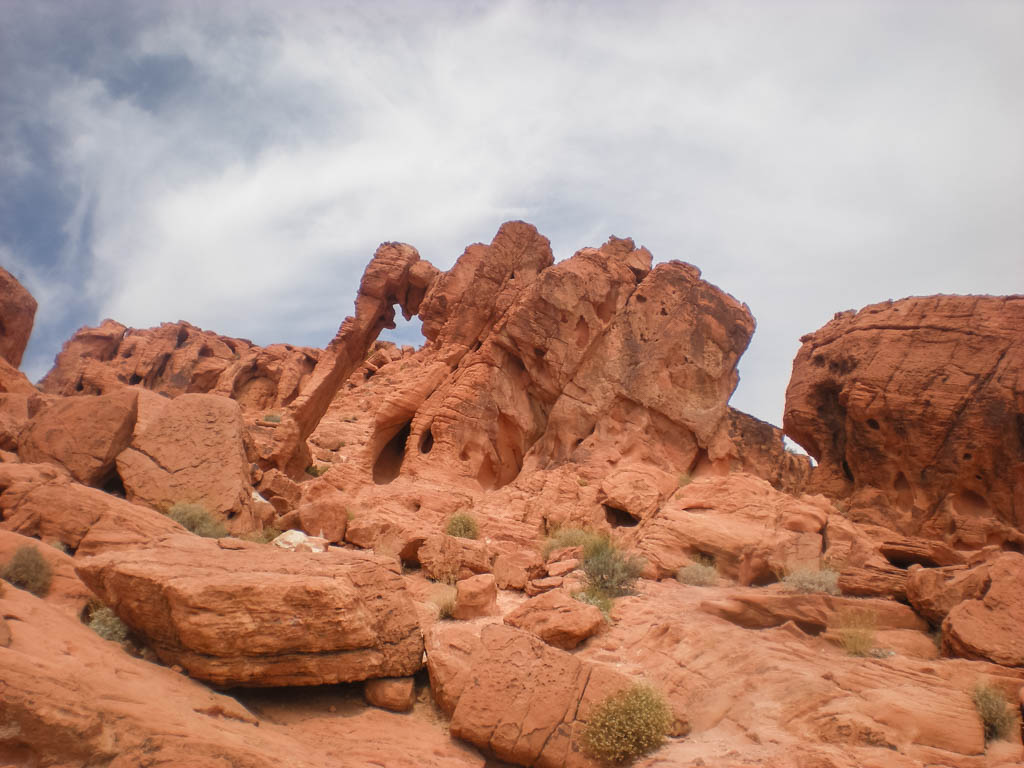
Distance: 0.2 miles out-and-back or 1.25 mile loop
Time: 10 minutes
Difficulty: Easy
The last main feature along the Valley of Fire Highway before reaching the East Park Entrance is the unmistakable Elephant Rock.
Like many of the other famous features in Valley of Fire State Park, Elephant Rock is comprised of flaming orange sandstone that was eroded into an arch that roughly looks like an elephant.
To reach Elephant Rock you will need to walk about 0.3 miles from the parking lot or you can take on the longer 1.25 mile loop walk.
Along Mouse’s Tank Road
Valley of Fire State Park Visitor Center
The Valley of Fire State Park Visitor Center sits at the junction of Valley of Fire Highway and Mouse’s Tank Road.
The visitor center is a good place to head for information on Valley of Fire State Park. The center also features exhibits of the geology, ecology, prehistory, and history of the Valley of Fire.
You can also pick up books and souvenirs here at the Valley of Fire State Park Visitor Center.
Valley of Fire Visitor Center Hours: 08:30 am – 16:30 pm daily.
Balancing Rock
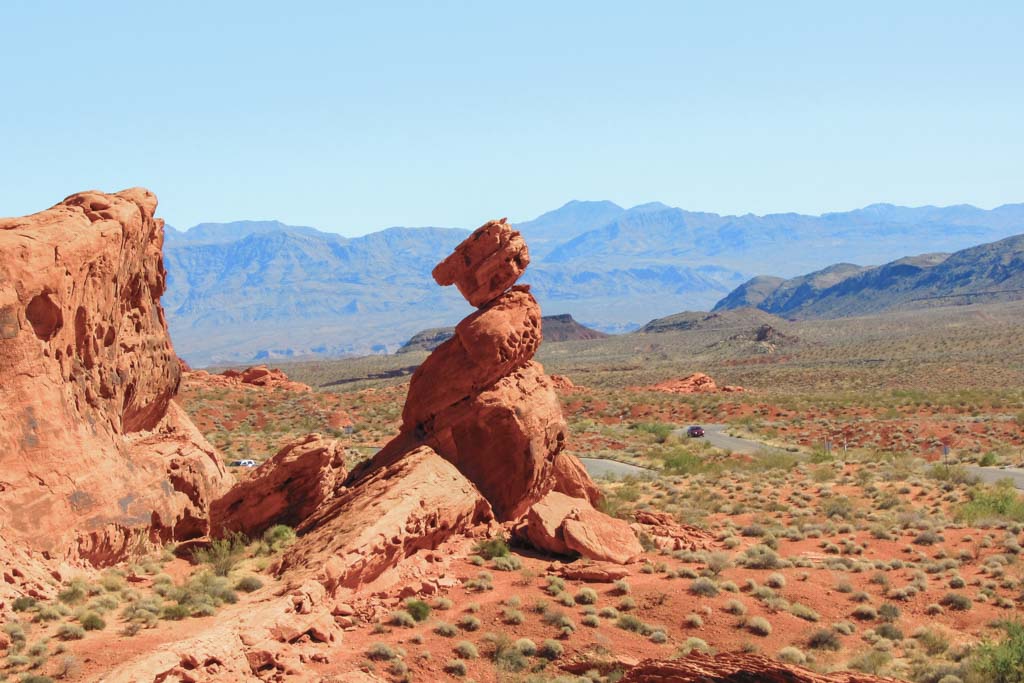
Distance: 0.24 miles out-and-back
Time: 20 minutes
Difficulty: Easy
A short hike 0.12 mile walk from the Valley of Fire Visitor Center will bring you to the Balancing Rock.
Balancing Rock, in my opinion, looks like a snowman with its column appearance with a rock balanced perfectly atop.
Petroglyph Canyon Trail
Distance: 0.7 miles out-and-back
Time: 30 minutes
Difficulty: Easy
This short and sweet 0.7 mile out-and-back trail located just a little north of the Valley of Fire Visitor Center along Mouse’s Tank Road is probably the easiest to access petroglyphs in Valley of Fire State Park.
The Petroglyph Canyon Trail meaders through a sand bottom narrow canyon.
The etchings here are ancient, yet no one is quite sure what the markings mean or represent.
Mouses’s Tank
Distance: 0.75 miles out-and-back
Time: 30 minute
Difficulty: Easy
The Mouse’s Tank is one of the most iconic views of Valley of Fire State Park but the area is packed with fascinating history and geologic formations.
Mouse’s Tank was used by the Paiute outlaw Little Mouse in the 1890s as a hideout to escape those who accused him of murdering two people in the Valley of Fire.
To access Mouse’s Tank Hideout, you’ll need to hike for 0.75 miles into a natural basin that collects water during rains, hence the word tank in the name.
You will find prehistoric petroglyphs along the Mouse’s Tank trail.
Rainbow Vista
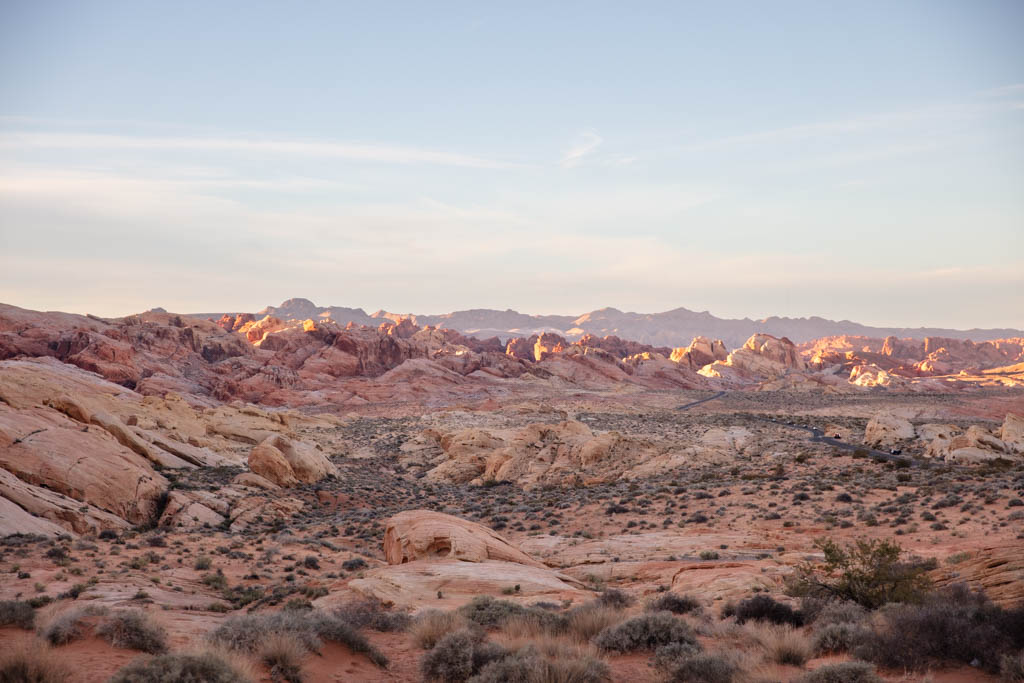
Distance: 1 mile out-and-back
Time: 30-45 minutes
Difficulty: Easy
An easy favorite along Mouse’s Tank Road is the kaleidoscopic Rainbow Vista.
With splashes and striations of pink, orange, red, white, brown, and gold the 1.1 mile out-and-back Rainbow Vista Trail is a must-see in Valley of Fire State Park.
The furthest reach of the Rainbow Vista Trail ends at a hill with epic panoramic views of the Valley of Fire.
Fire Canyon & Silica Dome
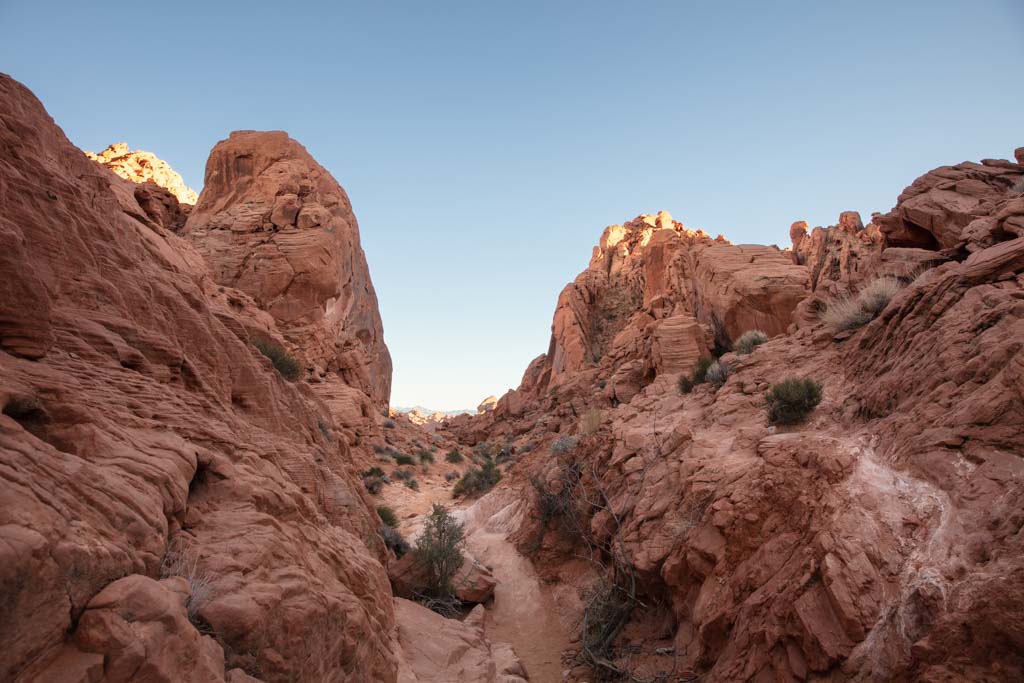
Just north of the Rainbow Vista Trailhead along Mouse’s Tank Road, follow Fire Canyon Road to the east to reach the Viewpoint over Fire Canyon and the Silica Dome.
The overlook is a bit elevated giving off great 360° views of Fire Canyon and the Silica Dome and other features in the central section of Valley of Fire State Park.
Seven Wonders Loop
Distance: 1.8 mile loop
Time: 1-2 Hours
Difficulty: Easy to moderate
The Seven Wonders Loop Trail combines some of the most stunning of Valley of Fire State Park’s geologic features into 1.8 mile hike.
To start the Seven Wonders Loop it’s best to park at the Fire Wave Parking Lot along Mouse’s Tank Road.
If taking on the Seven Wonders Loop in a clockwise direction you will first reach the famous Fire Wave before continuing onto the Pink Canyon.
Beyond Pink Canyon, continue across Mouse’s Tank Road to continue the hike through rainbow sandstone back to the parking lot.
Fire Wave
Distance: 1.8 mile loop (via Seven Wonders Loop) or 1.5 miles out-and-back
Time: 30 minutes to 1 hour
Difficulty: Easy to moderate
One of the most popular sites in Valley of Fire State Park is the Fire Wave, and for good reason, it’s beautiful.
The Fire Wave can be accessed via the above-mentioned 1.8 mile Seven Wonders Loop Hike or via a 1.5 mile out-and-back route.
This geologic wonder features stripes of varying shades of reds, oranges, and white swirled into the rocks comprising the Fire Wave.
As this is one of the most popular places to visit in Valley of Fire, be prepared for crowds.
Pink Canyon
Distance: 1.8 mile loop (via Seven Wonders Loop) or 0.7 miles out-and-back
Time: 30 minutes to 1 hour
Difficulty: Easy to moderate
Located along the Seven Wonders Loop Hike near the end of Mouse’s Tank Road, the Pink Canyon (also called Pastel Canyon on some maps) is one of the most beautiful features within Valley of Fire State Park.
As the name suggests, the canyon features pastel pink striations.
To reach Pink Canyon, follow the Seven Wonders Loop Trail past the Fire Wave and just beyond the Kaolin Wash.
There is a small lot big enough for only two cars right off of Mouse’s Tank Road that gives a very brief walk to Pink Canyon.
White Domes Viewpoint & White Domes Loop Trail
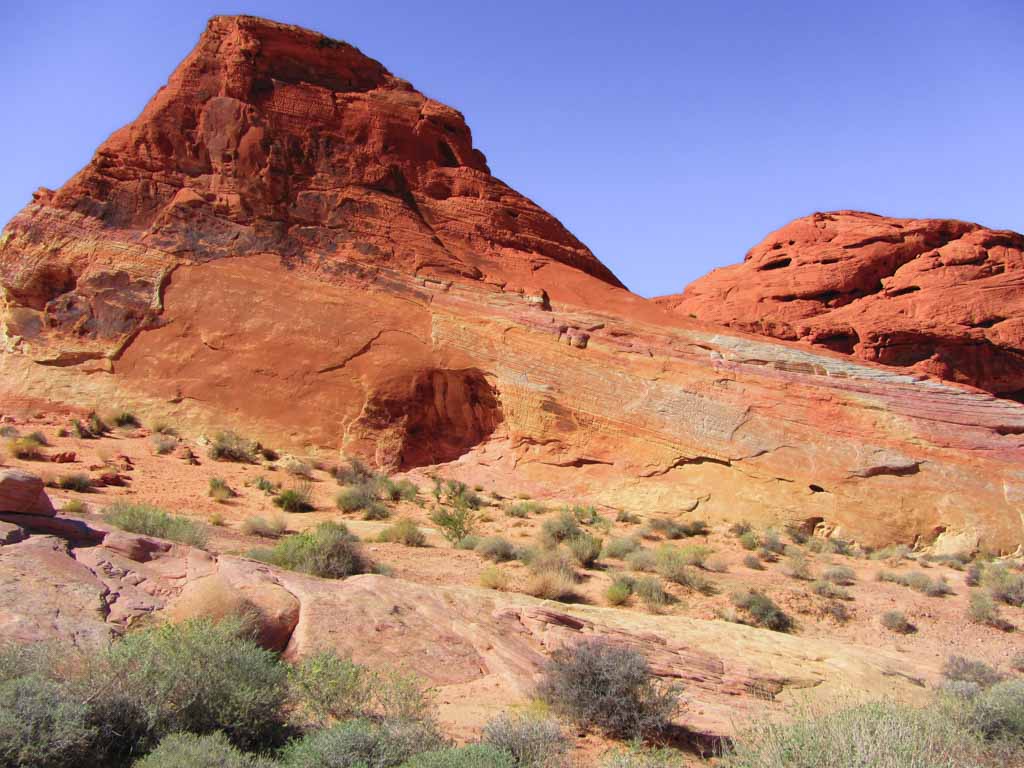
Distance: 1.25 mile loop
Time: 1-2 hours
Difficulty: Easy to moderate
At the end of Mouse’s Tank Road, you’ll reach the parking lot for the White Domes Viewpoint and the White Domes Loop Trail.
The White Domes are one of the most scenic parts of Valley of Fire State Park.
The White Domes Loop Trail is 1.25 mile hike that is a bit more challenging than other popular hikes in Valley of Fire State Park seeing that it involves a quick descent at the beginning to reach a narrow slot canyon before bending back toward the parking lot and involving an uphill climb at the end.
It’s recommended to go to the White Domes Loop in a clockwise direction to have a quicker descent and a more gradual uphill at the end.
Valley of Fire Day Trip Itinerary from Vegas
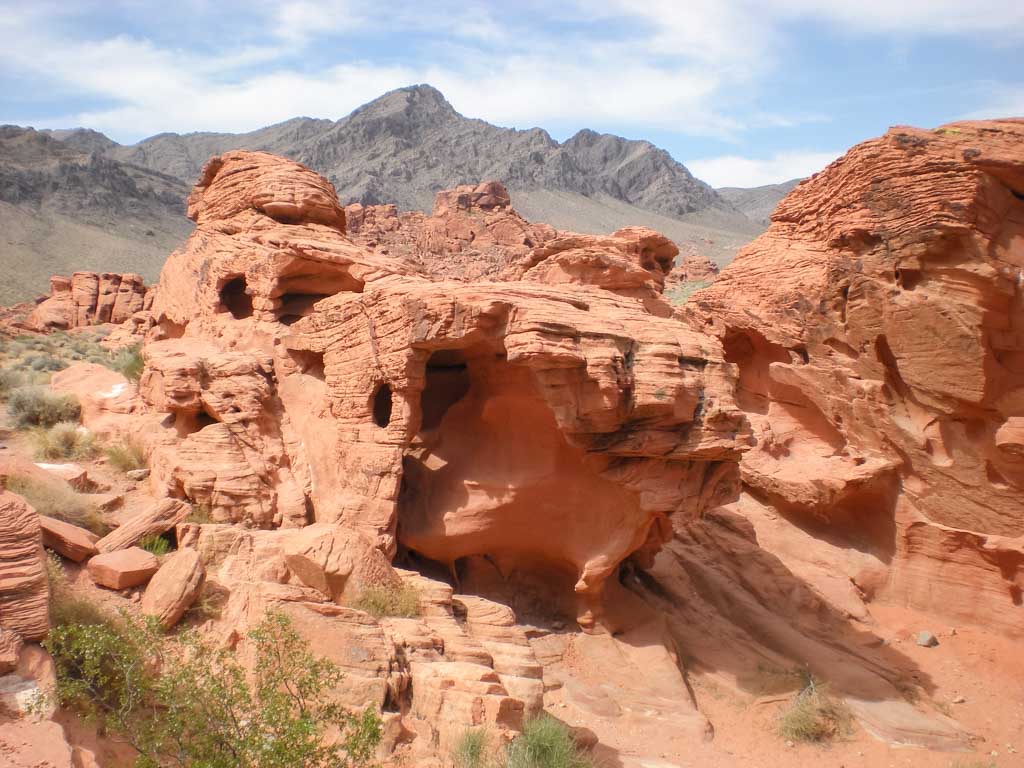
Seeing that the Valley of Fire State Park makes a great day trip from Vegas, I’ve created a quick itinerary for those planning to do it.
Get an early start from Vegas to beat the crowds and maximize your time in the Valley of Fire. I’d suggest leaving Las Vegas around 07:00 am.
You will enter from the West Entrance based on my itinerary below, but you can easily reverse it if you plan to come from the east.
- After entering at the West Entrance, visit The Beehives along the Valley of Fire Highway.
- Continue onto the Scenic Loop for Atlatl Rock and Arch Rock.
- Head up Mouse’s Tank Road for scenic views.
- Visit the Fire Wave and Pink Canyon along the Seven Wonders Loop.
- Continue to the end of Mouse’s Tank Road and do the White Domes Loop if time permits. At very least go to the White Domes Viewpoint.
- Drive back down Mouse’s Tank Road, and stop to hike Rainbow Vista, and if there’s enough time, hike Mouse’s Tank.
- Head east onto the Valley of Fire Highway and make stops at the Seven Sisters, the Petrified Logs, and finally Elephant Rock.
- From here you can continue out of the East Park Entrance and back to Las Vegas or turn around and go back to the West Park Entrance to take the I-15 back to Vegas.
Camping in Valley of Fire State Park
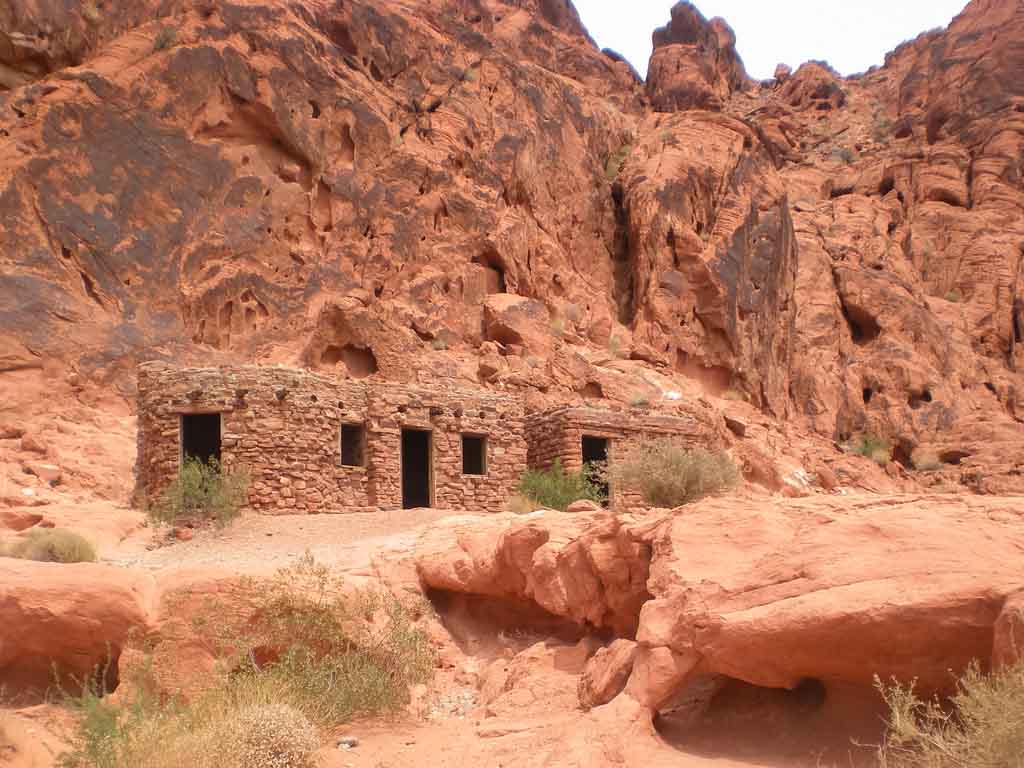
There are two campgrounds inside Valley of Fire State Park, Atlatl Campground and Arch Rock Campground.
Atlatl Campground
Atlatl Rock Campground is the main and largest campground of Valley of Fire State Park. It features both tent and RV camping.
The campground has several amenities including toilets, showers, fire pits, grills, and picnic tables.
- Number of campsites: 44
- Tent sites: Yes
- RV sites: Yes (at 22 sites)
- Electric hookup: Yes (at 22 sites)
- Restrooms/showers: Yes
- Dump station: Yes
- Pets allowed: Yes
Arch Rock Campground
Arch Rock Campground is the smaller of the two campgrounds at Valley of Fire State Park.
The campground has fewer amenities than Atlatl Campground with simple toilets, fire pits, grills, and picnic areas.
Do note that Arch Rock Campground is only open in the spring and fall and closes in the summer and winter months.
- Number of campsites: 29
- Tent sites: Yes
- RV sites: no
- Electric hookup: No
- Restrooms/showers: Yes/No
- Dump station: Yes
- Pets allowed: Yes
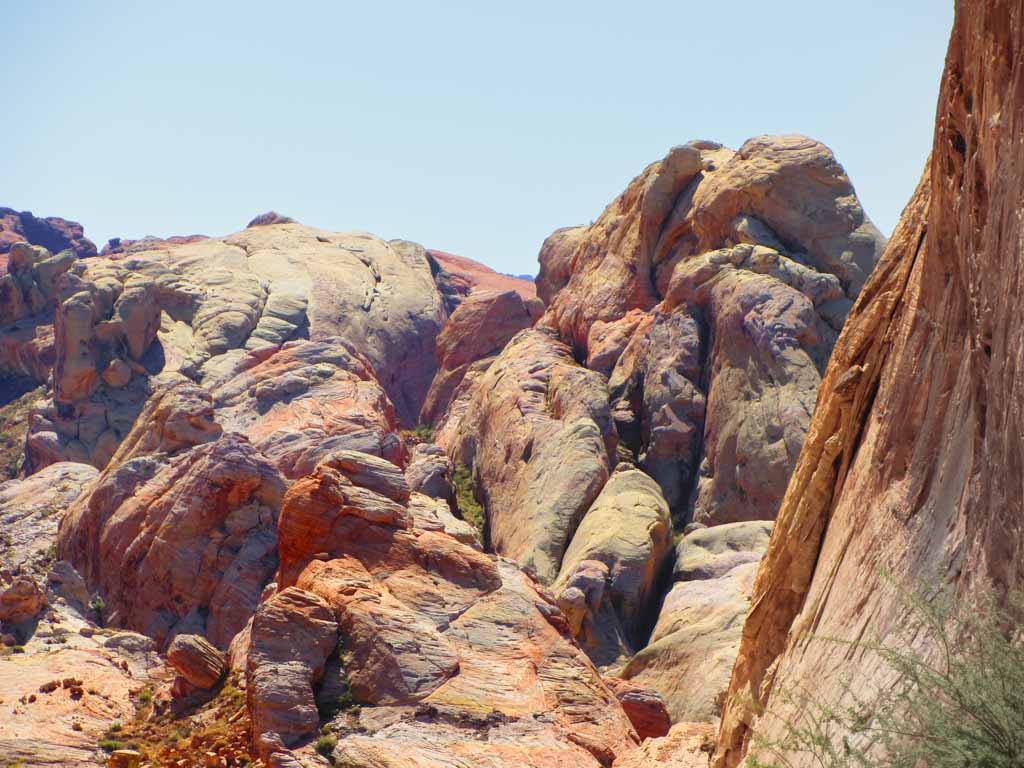
Have any questions about visiting the Valley of Fire?
Ask in the comments section below.
